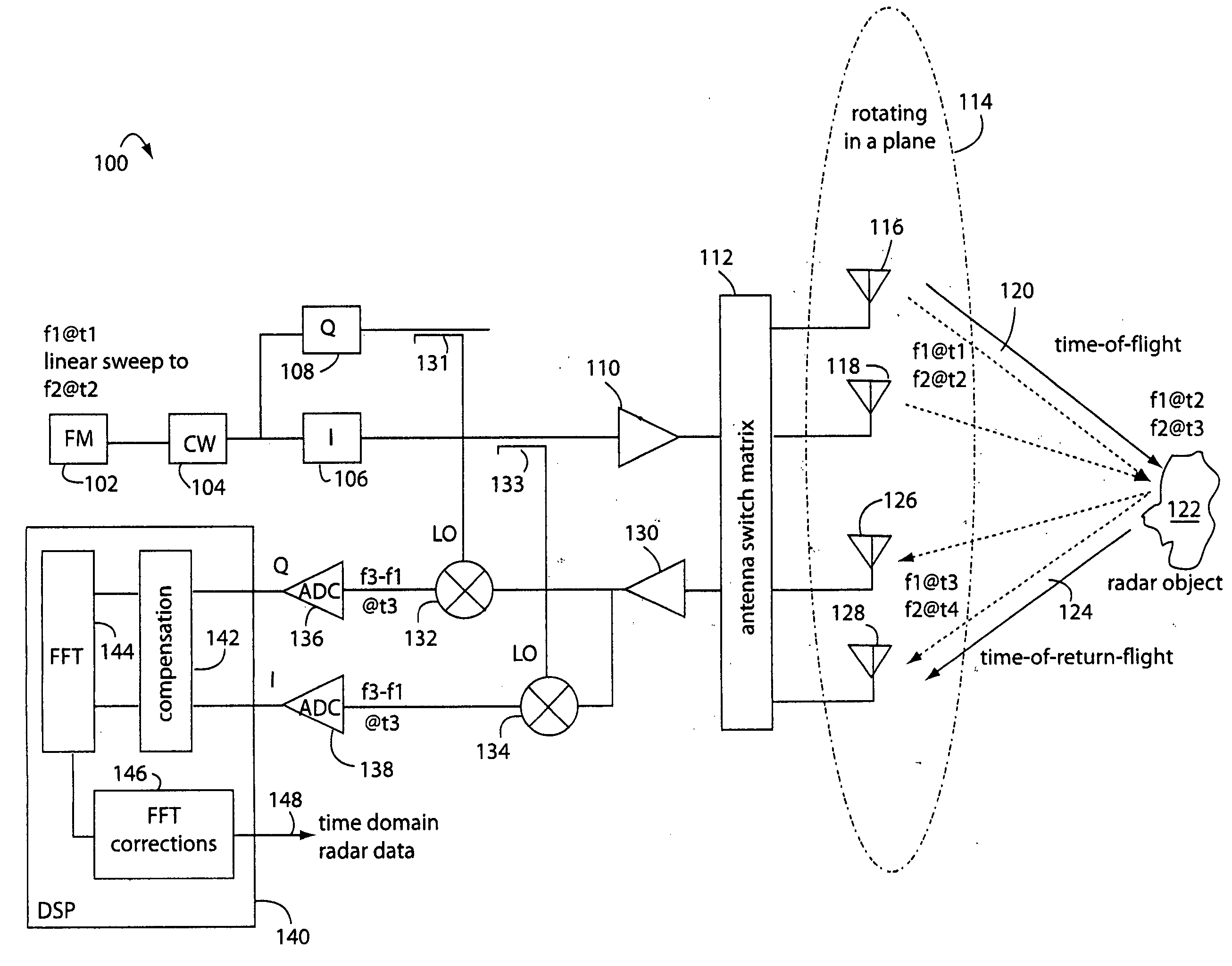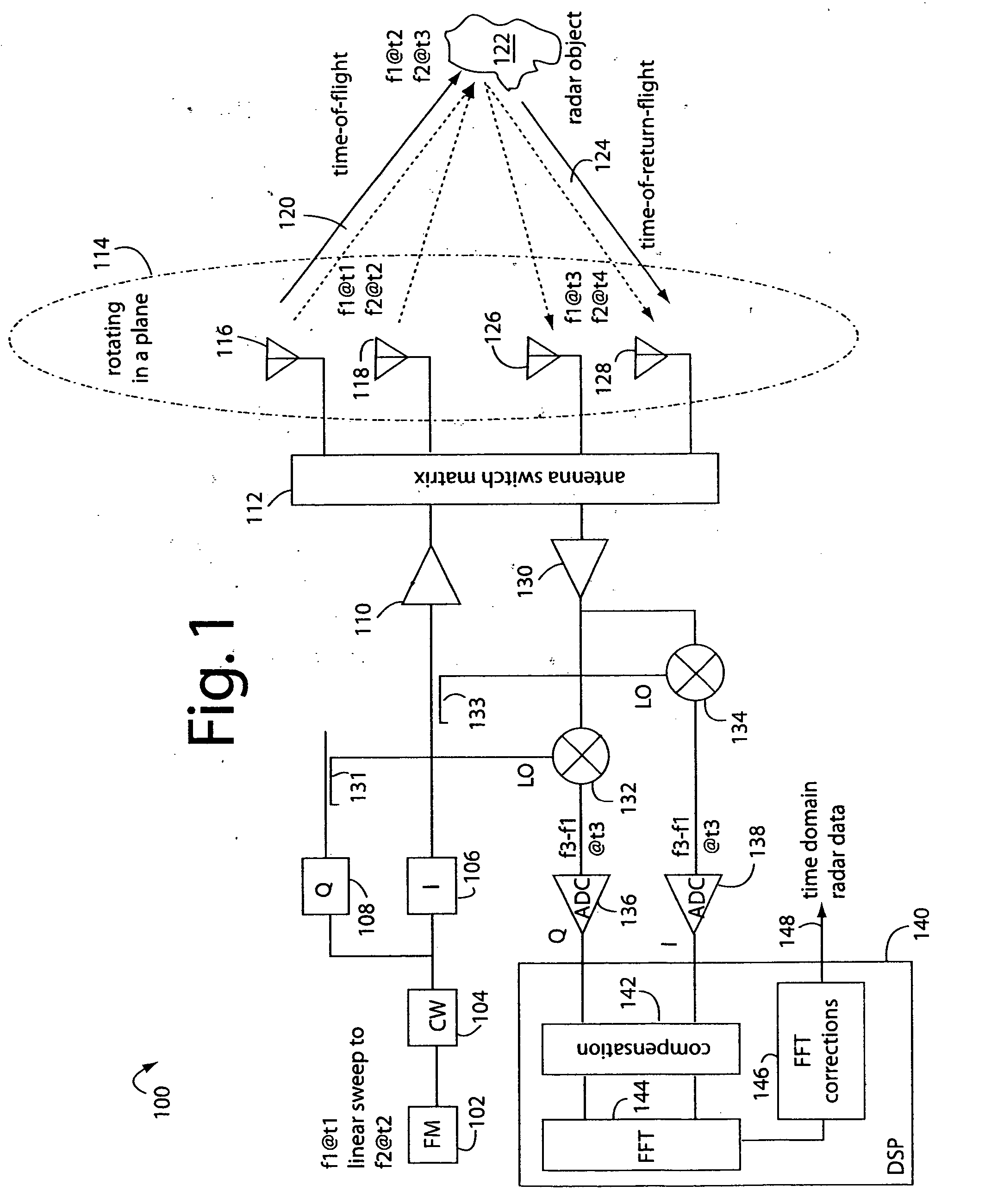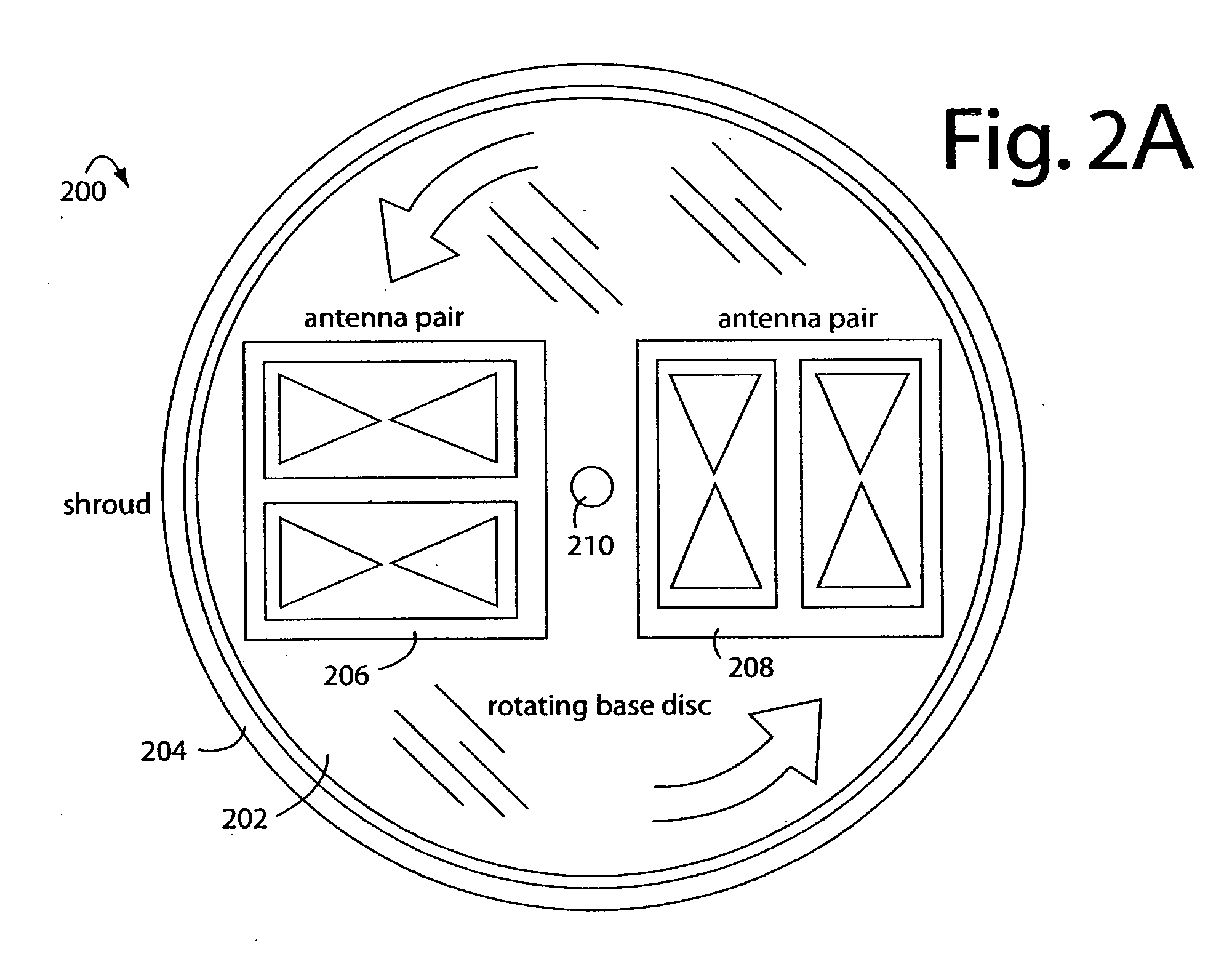Linear FM radar
a radar and linear fm technology, applied in the field of radar and ground penetrating radar imaging methods, can solve the problems of not having recognized this source of error, no solution proposed in conventional radar implementations, unpredictable frequency of return echo signals, etc., and achieves less bulky, fine radar details, and easy maneuverability.
- Summary
- Abstract
- Description
- Claims
- Application Information
AI Technical Summary
Benefits of technology
Problems solved by technology
Method used
Image
Examples
Embodiment Construction
[0023]FIG. 1 illustrates an FM-CW radar system embodiment of the present invention, and is referred to herein by the general reference numeral 100. The radar system 100 comprises a frequency modulator (FM) 102 that causes a continuous wave (CW) generator 104 to linearly sweep through a band of frequencies. For example, at a time-1 (t1) the transmitter frequency from CW generator 104 will be frequency-1 (f1). At a time-2 (t2), the transmitter frequency will slew up to a frequency-2 (f2). And at a time-3 (t3), the transmitter frequency will slew further to a frequency-3 (f3). An in-phase (I) unit 106 digitally produces an I-signal, and a quadrature-phase (Q) unit 108 digitally produces a Q-signal 90-degrees shifted in phase. The I-signal is amplified by a power amplifier 110 before being selectively switched through an antenna matrix 112 to a rotating antenna array 114.
[0024] The rotating antenna array 114 allows, e.g., transmitting antennas 116 and 118, to radiate their signals from...
PUM
 Login to View More
Login to View More Abstract
Description
Claims
Application Information
 Login to View More
Login to View More - R&D
- Intellectual Property
- Life Sciences
- Materials
- Tech Scout
- Unparalleled Data Quality
- Higher Quality Content
- 60% Fewer Hallucinations
Browse by: Latest US Patents, China's latest patents, Technical Efficacy Thesaurus, Application Domain, Technology Topic, Popular Technical Reports.
© 2025 PatSnap. All rights reserved.Legal|Privacy policy|Modern Slavery Act Transparency Statement|Sitemap|About US| Contact US: help@patsnap.com



